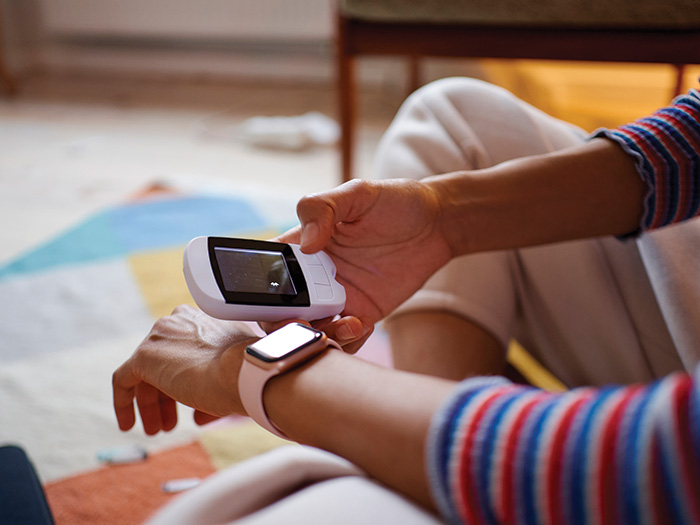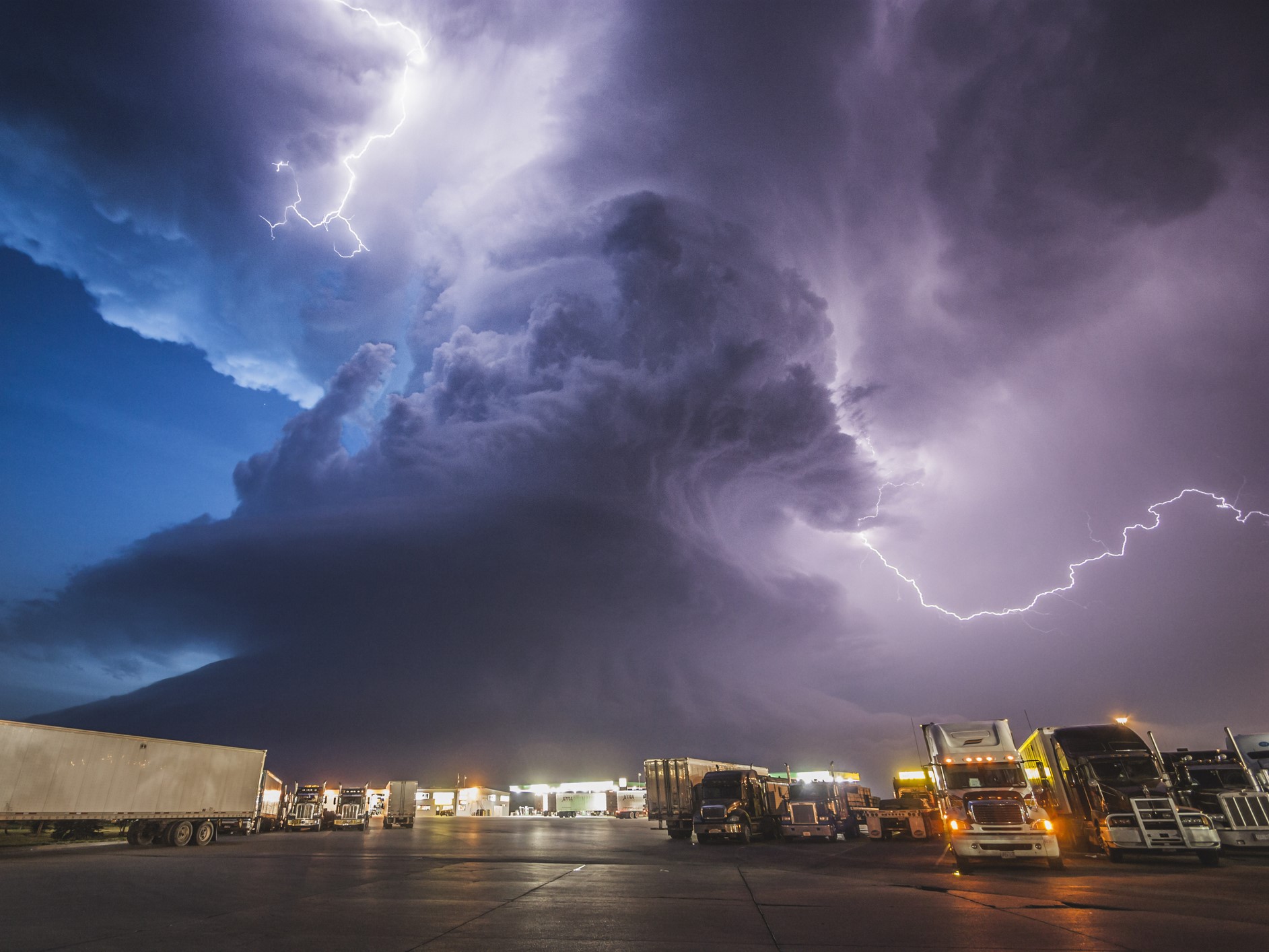Sponsored Content by The Hartford
5 Ways Video Monitoring Will Aid in Mitigating Construction Site Risk

Video monitoring has long been a part of construction site safety. Cameras overlooking equipment overnight aid in identifying vandalism or theft, while daytime recording can spot potential injury hazards for workers.
But, “the real value has yet to be fully determined,” said Bret Bush, risk engineering strategy and execution lead, IoT Innovation Lab at The Hartford. “Video has played a huge safety role for construction sites, preventing trespass, theft and other like incidents.”
Bush added, however, there’s still a way to go with construction site monitoring. “Because of the sophistication of imagery we now have access to, we’re realizing there’re a lot more value-added benefits to find for our customers using a video approach.”
No longer tied down by wires, portable cameras can be placed anywhere. They’ve also become more durable and can record in high-def.
Because of cloud-based technology, as well, recording footage can be done round-the-clock instead of during a set number of hours, enabling construction sites access to 24/7 monitoring.
Adrien Robinson, head of construction, inland marine and complex casualty, The Hartford, added: “When a site’s monitored, at any moment during the process, contractors or owners can sit down in different parts of the country and view the process of the construction … and what’s going on. This could be a great benefit to keeping projects on track and promoting safety.”
Here are five ways video monitoring positively impacts construction.
1. Identifying Risk Is Made Easy

Bret Bush, Risk Engineering Strategy and Execution Lead, IoT Innovation Lab, The Hartford
Complex construction sites require regular inspection to make sure plans are running smoothly and safety precautions are in place. There’s a lot of benefit in this, because it can alert a contractor or owner to any rising risks that need to be addressed.
The downside, as Bush explained, is that often the inspection is a snapshot of that particular moment in time.
“At The Hartford, our Risk Engineering Consultants work in partnership with underwriting and do a great job of inspecting sites,” he said. “But these inspections aren’t every day. They might be once a month or once a quarter, depending on the schedule.”
With a camera rolling 24/7, both Bush and Robinson hope that the large risks construction sites face will be spotted long before they can cause loss, because the cameras are equipped with artificial intelligence.
An AI platform can be programmed to spot anything that might be amiss and can then alert the site manager in real time to the threat or danger.
“There’s a lot of expensive machinery and equipment on a construction site. Having these cameras is like having a home security system,” Robinson said. “The real beauty of the cameras going forward, though, is the ability to see if people are working in unsafe working conditions.
“That will enable us to address the issue before someone actually gets injured,” Robinson said.
2. Video Helps Save Costs

Adrien Robinson, Head of Construction, Inland Marine and Complex Casualty, The Hartford
As mentioned, video monitoring helps reduce risk at sites when the inspectors are away, effectively cutting costs spent on injury or theft claims.
“We can utilize that data—in this case, the video feed—to identify risks,” Bush said. “And then, from a cost-saving standpoint for the customer, we can prevent those losses from happening or address them immediately.”
From the insurance standpoint, he added this kind of monitoring can not only show the insurer what’s going on risk-wise, but also pinpoint the specific risks of a jobsite instead of generalizing the risks for the construction industry.
Insurance companies can then better utilize its offerings and position its resources in such a way that get the client exactly what they need, further saving costs for the insured.
“Video monitoring is reducing the risk for the customer,” Bush said, “and helping insurers focus their resources where they’re best utilized.”
3. There’s a Greater Sense of Safety Among Workers
With the advent and the use of AI, video monitoring is getting close to having real-time data in the hands of owners and contractors.
“We’re very close to real time, where you can take video feeds, have it run through that AI, and then it can tag or identify things like hazardous conditions, housekeeping, workers not wearing proper PPE,” Bush said.
As hazardous conditions are identified, the goal will be to quickly alert safety personnel of the danger. The additional benefit is creating a work environment aware of its safety measures on a daily basis.
“Everyone can use the cameras as a reminder to just stop and think a little bit about the activity they’re doing, and it changes behavior in a good way,” Bush said.
Video monitoring can also have an impact on worker safety post-accident, as the cameras can provide visual evidence of the injury.
“We can see if there is any liability for the construction site owner or contractors,” Robinson said. “But we can also use those visuals as a learning tool, an opportunity to prevent the accident from happening again.”
4. Video Shows Construction’s Environmental Impact
Imagery is a path for the future: “We believe video monitoring can have a lasting impact both for the construction site and beyond,” said Bush.
Cameras can monitor more than a site; they can also identify things not as easily visible or as prominent in a single moment, like a site’s lasting environmental impact.
“Worker safety and construction efficiency are the first two legs of a stool,” Robinson said. “We think the third leg of that stool is finding a way to identify wasted resources on a construction site using that imagery.”
Monitoring water, electricity and materials via AI-supported surveillance can ultimately show where a site can become more energy efficient.
5. Build Confidence Among Contractors and Owners
New constructions tend to be multi-year, complex projects. In that time, there are countless review meetings between contractors and the owners. Periodic inspections or on-site meetings certainly provide updates and information about a site, but what about the time in between?
Cameras enable contractors and owners to remain on the same page throughout the process. For example, look at weather-related delays: “The cameras can really help show the story alongside the storm,” Robinson said. “That capability gets the partners on a much more common ground about what is actually happening on the site.”
Executives can be part of virtual meetings without having to be locally onsite. The whole process is at every stakeholder’s fingertips. “There’s a huge amount of confidence being built between contractor and owner when video visual evidence is accessible,” said Robinson. “They can go back in time and review very specific events; if someone had a challenge with constructing a piece of the project, that can now be reviewed. It gives the owner a lot more confidence that they’re really dealing with folks who are confident in their own abilities to construct a project as it is meant to be constructed.”
What to Look for When Adding Cameras to a Construction Site
When looking to add cameras to a construction site, find a video partner that understands a construction site’s unique risks: “There are a lot of video companies that do various types of properties. But not everyone knows what’s needed at complex and often chaotic construction sites,” said Bush.
The video partner must also have true expertise in their area. “These shouldn’t only be technology camera providers,” Robinson said. “They should have construction experts involved with camera placement.”
The Hartford team is equipped to help its risk engineering partners, underwriting partners, broker partners and customers use video devices to meet their construction site needs.
“We have a true partnership model,” Bush explained.
To learn more, visit thehartford.com/construction.
Contact Bret Bush
Bret M. Bush, ARM, CRIS
Risk Engineering, IoT Strategy & Execution
630-846-0430
The Hartford® is The Hartford Financial Services Group, Inc. and its property and casualty subsidiaries, including issuing company, Hartford Fire Insurance Company. Its headquarters is in Hartford, CT.
![]()
This article was produced by the R&I Brand Studio, a unit of the advertising department of Risk & Insurance, in collaboration with The Hartford. The editorial staff of Risk & Insurance had no role in its preparation.










